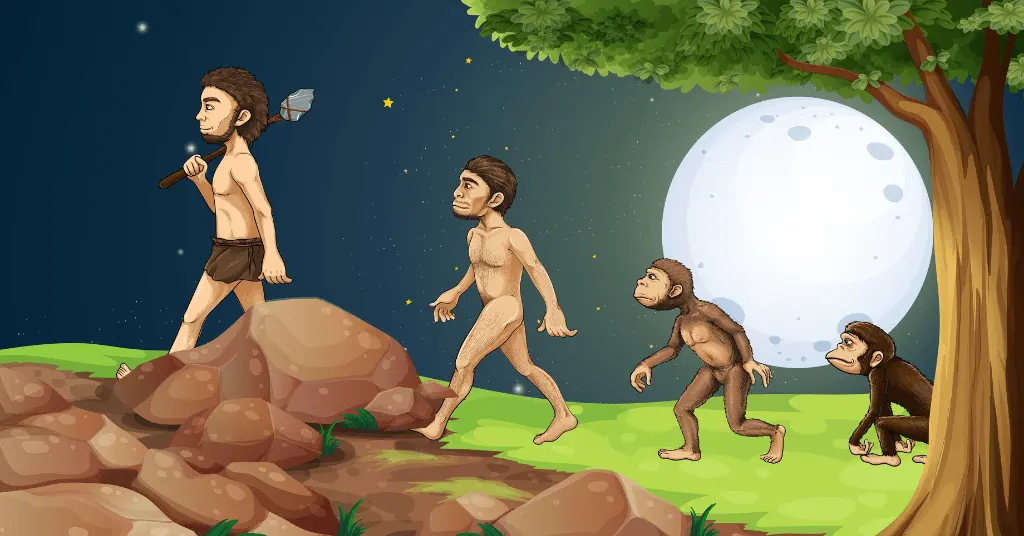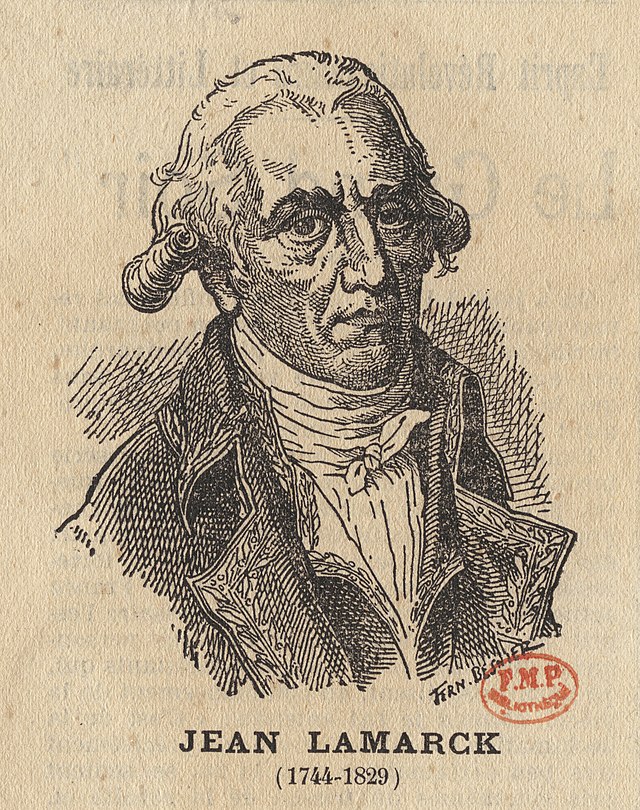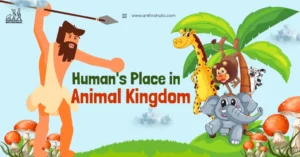AI Answer Evaluation Platform Live Now. Try Free Answer Evaluation Now
Organic Evolution
Organic evolution is the gradual accumulation of genetic changes in populations of organisms over time that results in the transformation of species into new ones. It is a systematic and continuous process that is responsible for the observed biodiversity on Earth (Singh, 2013).
According to Darwin, Organic Evolution is the ‘Descent with modifications’ or ‘Continuity of life with constant modifications’ which implies that the present complex and highly organized living beings have evolved from simpler and less organized living beings of the past by gradual modification accumulated through successive generations over millions of years. Living beings modify and adapt to their ever-changing environment, which causes changes in the gene frequency (Nath, 1996). As a result, organic evolution can be defined as a gradual change in a population’s gene frequency.

Presumptions of Organic Evolution
- Environment is dynamic.
- Organisms have an innate ability to change in order to adapt to changing environments, this is referred to as adaptability or adaptation. This leads to the origin of new species.
- New species are invariably more organized and better adapted than their predecessors.
- Time consuming and gradual process.
Evidences/ Methods to study Organic Evolution
- Comparative Anatomy – An examination of morphological similarities and differences in fragmented fossilized bones reveals a common ancestor with modifications.
- Fundamental similarity – Organic evolution can be studied using biomolecules such as carbohydrates, fats, proteins, nucleic acid, and so on. In terms of digestive, respiratory, and circulatory physiology, different groups of animals share fundamental similarities.
- Embryological evidence – The embryonic stages of evolved groups are comparable. Human embryos, for example, are identical to fish embryos. Recapitulation theory describes this.
- Taxonomy – Characteristics in common among the organisms are used to classify them. Like, a diaphragm separating the thoracic from abdominal cavity is present in all mammals.
- Geographical distribution – The same geographic area contains related fossils and modern creatures. Similar to how the orang-utan is prevalent throughout Asia, where its ancestor Sivapithecus was discovered.
- Cytogenetic evidence – Eukaryotic chromosomes have the typical nucleosome structure, indicating a fundamental similarity in their genetic design. Nucleosomes with G – bands have similarities.
- Immunological evidence – These are determined by the antigen-antibody reaction. Human albumin protein shares 95% of its sequence with Chimpanzees and Gorillas.
Mechanism of Organic Evolution
Organic evolution involves change in gene frequency of a population due to various factors. The synthetic theory of evolution explains how the mechanism of evolution functions.They are as under

Theories of Organic Evolution
In order to explain organic evolution several theories have been put forward.
Pre-Darwinian theories
Theory of Spontaneous Origin:
- Proposed by Aristotle
- Life has spontaneously emerged from inanimate materials
Theory of Divine Creation:
- Proposed by Spanish monk Sudrez
- According to the Old Testament of the Bible, the world was created by a supernatural or divine power
- In Hinduism, it is believed that Lord Brahma has created all the living beings
Theory of Catastrophism:
- Proposed by George Cuvier
- It was based on fossil remains on various organisms
- Fossils are the remains of life that have been wiped out by various catastrophic events and can be found in various strata of sedimentary rocks. Each catastrophe is followed by God creating a new life.
These theories could not provide the relevant explanation about evolution hence were rejected.
1. Lamarckism

- Jean – Baptiste Lamarck put forward this theory in his book “Philosophic Zoologique” in 1809.
- It was the first and most convincing theory of organic evolution.
- Lamarck was the first naturalist to assert that animals could alter and modify themselves to accommodate changing environmental conditions.
- This theory is popularly known as “Inheritance of Acquired Characters”.
Postulates of Lamarckism (Nath, 1996)–
Postulate 1 – Theory of ‘Elan Vital’ or growth (Nath,1996)
- The growth of an organism’s organs and systems tends to increase its size due to internal forces of life.
- Ex. – A zygote develops into a huge creature and a seed becomes a plant.
Postulate 2 – Theory of environmental pressure and spontaneous formation of organs (Nath,1996)
- New organ or system is created as a result of a need or want that the organism continues to feel as a result of environmental pressure.
- This postulate has three components –
- Environmental pressure
- Feeling of need by the organism
- Spontaneous acquisition of new characters
Postulate 3 – Theory of Use and Disuse (Nath,1996)
- The development of an organ is directly proportional to its use.
- Continuous use makes the organ stronger, but inactivity has the opposite effect.
- Lamarck cited many examples –
- Development of strong bicep muscles in blacksmithing.
- Lengthening of the neck in giraffes due to its continuous use in reaching to the leaves and fruits of high rise trees.
- Development of webbed feet in aquatic birds.
- Occurrence of vestigial organs, such as pinna, vermiform appendix in man due to its constant disuse.
Postulate 4 – Theory of Inheritance of Acquired Characters (Nath,1996)
- All the changes that organisms acquire during its lifetime are transmitted to the next generation.
Criticism of Lamarckism
- A hard blow to Lamarckism came from a German biologist, August Weismann who proposed the ‘theory of Continuity of Germplasm’ in 1892 (Nath,1996). According to this theory, environmental factors only affect somatic cells and not germ cells.
- This theory places much weight on inner urge.
- It considers the environment as a docile force.
Experiments against Lamarckism
- Mutilation experiment – by Weismann. He mutilated (cut) the tails of white rats and mated them but no loss of tail in succeeding generations was found.
- Boring of ears and nose.
- Wearing of iron shoes by females in China – it is a practice to reduce the size of their feet but it does not lead to reduced feet size in next generations.
Experiments in favor of Lamarckism
- F.B. Sumner’s experiment – he reared white rats at 20 to 30 degree Celsius and found that rats developed larger bodies, long tail and hind feet and the acquired characters were transmitted.
- Tower’s experiment – he put potatoes in experimental harsh conditions and found altered structures which were transmitted.
- Kemmerer’s experiment – he reared larvae of salamanders in yellow and black boxes and tried to show that the animal acquires such colorful features and transmit it to the next generation. He painted the adults with China – ink to prove his point.
- Griffith’s experiment – he put white rats in a cage and rotated them on a wheel in such a way that rats developed dizziness which was transmitted.
Recent controversy about Lamarckism
- Experiment by Guyer and Smith – they conducted an experiment on antibodies against lens – proteins of rabbit, and showed that bodily changes can bring about formation of new RNA and this new RNA leads to the formation of new DNA. i.e.
- Evidences of Lamarckism from Epigenomics – It has been found in inheritance of food controlled coat color in mice and environmentally induced heritable epigenetic changes involving alternatives in HSP 90 (heat shock protein).
Lamarckism is the first scientific assumption that recognized the adaptation to the environment as a primary product of organic evolution.
2. Darwinism
- Darwin explained the organic evolution in his book ‘Origin of Species by Natural Selection’ in 1859.
- Organic evolution involves gradual change in gene frequency which is inherited to the next generation or descent with modification.
Factors influencing Darwin
- Theory of Uniformitarianism by Charles Lyell with regard to the time period required for evolution.
- Ideas of Wallace on Evolutionary Biology i.e. tendency of varieties to depart from original type.
- Malthusian essay on population which indicated that population increases by geometric ratio whereas food production increases by arithmetical ratio.
- Industrial revolution in England – in order to survive and evolve organisms must be possessed with favorable variations.
- Empirical evidences collected by Darwin during his voyage –
- Fauna of Galapagos Island – Turtles and finches had shown great variation.
- The Pampas of Argentina – fossils of extinct animals (Nath, 1996) which made Darwin reasoned that species changes not only in time but also with geographical distance.
Postulates of Darwinism
- Overproduction: Living beings have an innate desire to reproduce more but population remains same due to –
- Predation
- Delicate and low viability
- High susceptibility against biotic and abiotic factors
- Struggle for existence
- All organisms reproduce in a geometric ratio but the food and space are not increased correspondingly. The organism should face competition for survival.
- The struggle for existence is of three types –
- Intra-specific struggle – Found among the organisms of the same species. It is for food and mating.
- Inter-specific struggle – struggle between individuals of different species. It is for food.
- Struggle against the environment – For survival.
- Variation
- The constant competition among species has forced them to adapt to the environment in order to make the most use of available resources and survive. This creates variations among the organisms.
- Survival of the Fittest or Natural Selection
- The organisms with beneficial variations will survive and those with less fit and unfavorable variations will be eliminated.
- Fitness of a group of population is decided on two criteria –
- Capacity of adaptation and preadaptation
- Differential reproduction – individuals must have capacity to leave more offspring forming the next generation.
Criticism of Darwinism
- Inheritance of vestigial organs could not be explained.
- Inheritance of over specialized organs. Ex. – antlers in deer, tusks in elephants.
- Darwin did not distinguish between germinal and somatic changes.
- Natural selection does not explain the evolution of terrestrial animals from aquatic ones.
- He did not assign primary importance to mutations which play a primary role in organic evolution.
3. Synthetic theory of organic evolution
- The synthetic theory is a combination of many theories which are related to organic evolution.
- It emerged in order to eliminate shortcomings of Darwinism.
- It is the most accepted theory on organic evolution.
- This theory is also known as Neo – Darwinism or Post – Darwinism.
Exponents
- Population dynamics – Ernest Mayer, Julian Huxley, T.T. Thompson
- Genetics and Mutation – Dobzhansky, H.J. Muller, Hugo de Vries
- Population Genetics – G.H. Hardy, W. Weinberg, Sewell Wright
The proponents of this theory laid emphasis on the population and not on the individual levels. As the population had the necessary variability to explain evolutionary genetic change through time and space.
Factors responsible for organic Evolution
1. Mutations
- These are sudden, large and inheritable changes in the genetic material (Nath,1996).
- It is of three types –
- Chromosomal aberrations: these include the morphological changes in the chromosomes without affecting the number of chromosomes (Das, 1961).
- Numerical chromosomal mutations: these changes in the number of chromosomes.
- Gene mutations: these are invisible changes in the chemical nature of a gene.
2. Genetic recombination
- Thousands of new combinations of genes are produced due to crossing over, chance arrangement of bivalents at the equator during metaphase 1 and chance fusion of gametes during fertilization.
3. Hybridization
- It involves the interbreeding of two genetically different individuals to produce hybrids.
4. Natural selection
- It differs from that of Darwinism that it does not operate through survival of the fittest but operates through differential reproduction and comparative reproductive success.
5. Migration
- It refers to moving in or out of a population.
6. Genetic drift
- It is the elimination of the genes of some original characteristics of a species by extreme reduction in a population due to epidemics or migration or Sewell Wright effect (Das,1961).
7. Isolation
- Any factor which reduces the chances of interbreeding between the related groups of living organisms is called an isolating mechanism.
Conclusion
According to the theory of organic evolution, more recent species of plants and animals had their origins in older varieties, and observable differences between progenitors and descendants are the result of changes in successive generations. By changing the genetic makeup of the organism, changes in the structural makeup of living things can be permanently absorbed. Because of these alterations, species are better equipped to adapt to shifting environmental conditions, increasing the likelihood that their progeny will survive.
References
- Coulter J.M. (1926). The History of Organic Evolution. Science, 63(1637), 487 – 491. http://www.jstor.org/stable/1650539 . Accessed on 01 February 2023.
- Das B.M. (1961). Outline of Physical Anthropology. Kitab Mahal; Allahabad, 2017.
- Ember Carol, Ember Melvin, Peregrine Peter. (2015). Anthropology. Pearson Education; Noida, 2019.
- Evolution: An International Journal of Organic Evolution. Nature 161, 162–163 (1948). https://doi.org/10.1038/161162d0 . Accessed on 01 February 2023.
- Nath P. (1996). Physical Anthropology. Higher Publishers; Patna, 2020, 195 – 290.
- Singh Ishwar. (2013). Organic Evolution. https://www.researchgate.net/publication/310605106_Organic_Evolution . Accessed on 01 February 2023.




